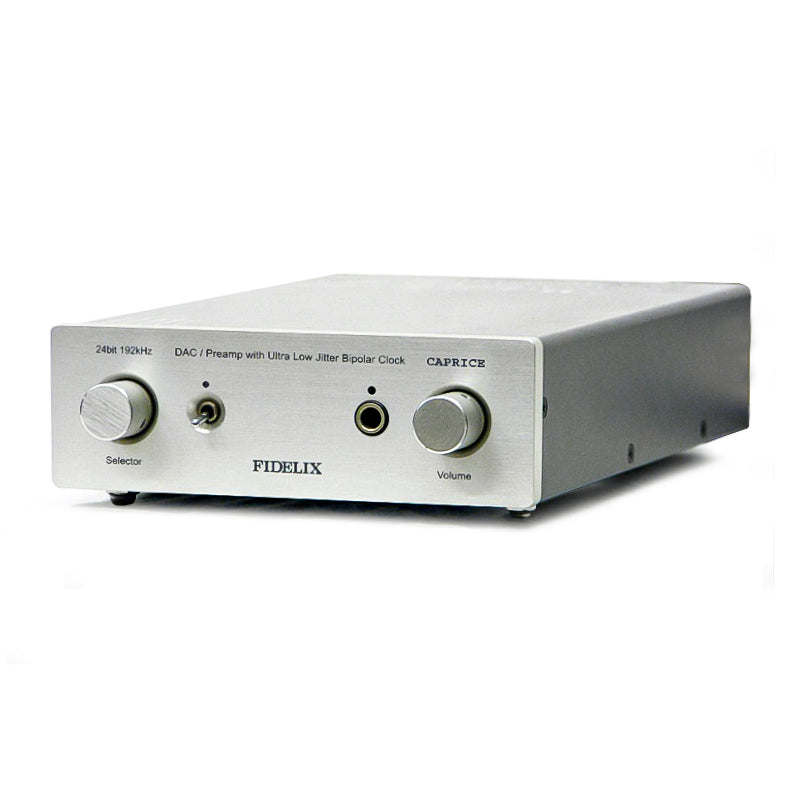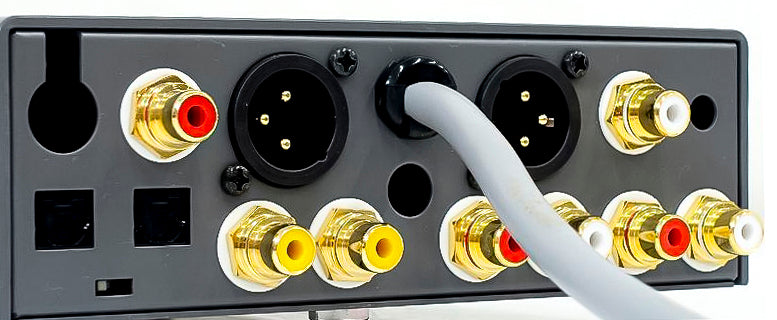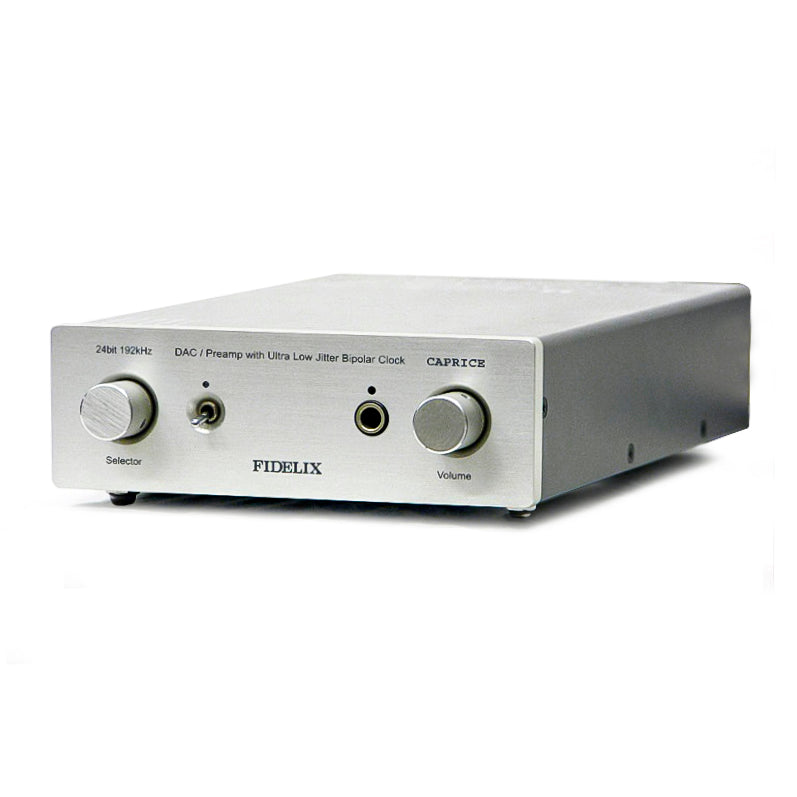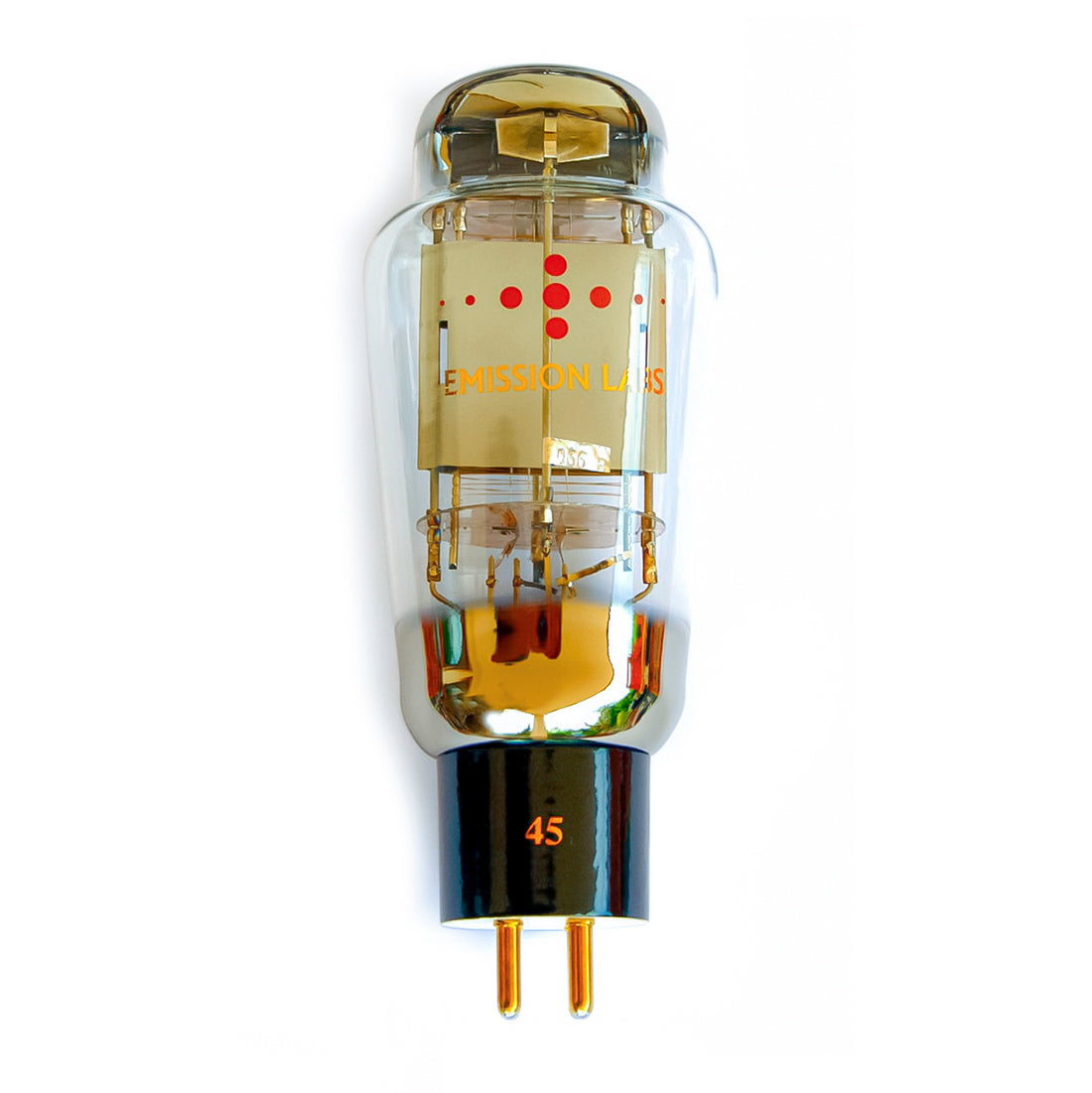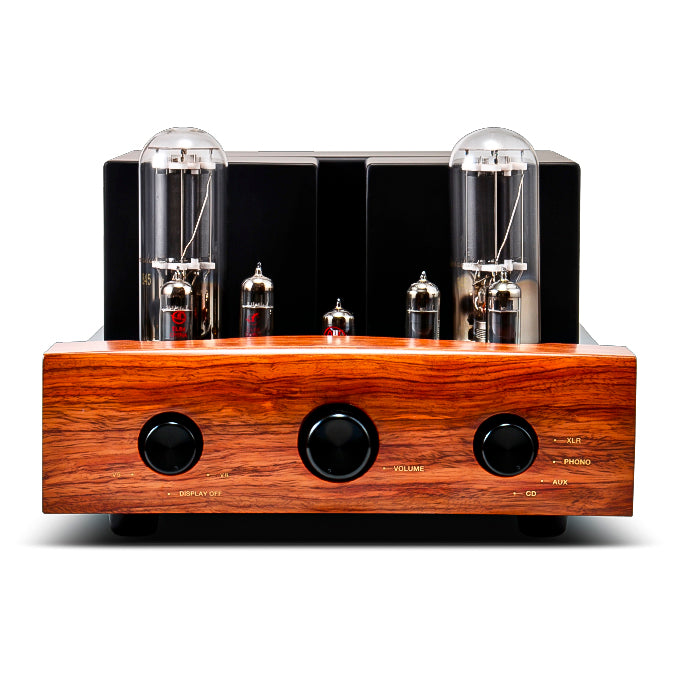* If the manufacturer is out of stock, it will take some time to deliver.
DACs with ultra-low jitter clocks and the best devices
Winner of the Audio Excellence Award 2011
FIDELIX CAPRICE IS EQUIPPED WITH THE HIGHEST PERFORMANCE ESS 32-BIT DAC CHIP ES9018. In order to take full advantage of this performance, the ultra-low jitter clock using a high-speed amplifier with bipolar inputs instead of CMOS is supplied from a dedicated shunt supply. In addition, key devices such as an ultra-low noise and no overshoot quick-response power supply that is about 30 dB lower than that of general 3-terminal regulators, and an all-JFET, class-A ultra-low-noise OP amplifier (1.8 nV/√Hz) that is particular about sound quality are developed and installed in-house. The IV converter consists of two circuits of this OP amplifier in parallel. The coaxial input is a high-speed pulse transformer (115MHz, 0.5pF with PS-to-PS shielding) and a high-speed comparator with hysteresis using a bipolar input to prevent jitter contamination, and TOSLINK is a high-speed type (25MBPS), and both SPDIF inputs support 24Bit/192kHz sampling (32Bit/192kHz sampling has also been confirmed to work) It does. The coaxial is equipped with 2 inputs and the TOSLINK is also equipped with 2 inputs. However, one of the three digital systems that can be switched by the rotary switch on the front is switched by coaxial or TOSLINK on the back. The digital 3 inputs can be switched by remote control.

It has two analog inputs, one of which can be optionally used as a phono equalizer (input converted noise voltage -140 dBV) by an all-JFET OP amplifier. As a further option, it is possible to switch between SP and LP curves. In addition, the analog signal is injected into a differential IV conversion circuit via a real-time BTL circuit (consisting of a JFET input OP amplifier) developed in-house. During digital operation, this injection circuit is disconnected.
* USB and AES/EBU may have some adverse effects when connected, and USB in particular may enter a lot of switching noise from PCs, etc., so we deliberately exclude them and recommend that they be converted to coaxials.

Variable output with front volume is equipped with RCA at the rear. This makes it very convenient to use as a DAC / preamplifier. This line amplifier is a complete DC amplifier in which two circuits of the JFET-input OP amplifier are paralleled. Since there is plenty of driving power, it also doubles as a headphone output. The direct output of a DAC that does not pass through the volume is the balanced output of XLR (No. 2 hot), and when used unbalanced, only XLR No. 1 and No. 2 are used (No. 3 is not connected anywhere). It is designed to eliminate the balance/unbalance conversion circuit, which reduces the freshness of the sound. The output voltage is 2.7V unbalanced using XLR No. 2 and 5.4V using No. 2 and No. 3, and the signal-to-noise ratio and dynamic range are 131dB, which is the highest level in the world. It has also demonstrated that clock jitter is by far the lowest. The distortion rate is 0.00064% (BW = 30kHz) at 5.4V output at 1kHz, which is the highest level in the world.
As for the power supply section, we have adopted independent power supplies on the left and right based on our experience that crosstalk through the power supply is non-linear and extremely malicious. The digital input can be digitally volumined by remote control, so the balanced output of the XLR can be sent directly to the power amplifier with the balanced input. When combined with the CERENATE power amplifier, it is possible to listen to fresher sound by creating a simple configuration that does not pass through the balanced/unbalanced conversion circuit or the reverse conversion circuit at all. However, since digital volumes cannot be used for analog inputs, it is a fixed output.

A total of three power transformers are used, one for analog and one for digital. The two analog transformers are connected in a direction that cancels the leakage flux. In order to demonstrate this ultra-high performance even in an environment with a lot of power supply noise, the power supply is equipped with a noise filter. It uses Schottky barrier diodes, audio capacitors, and audio resistors that do not generate power supply noise. The widespread use of non-magnetic resistors for audio from PRP in the U.S. has further improved the level of sound quality. The connector-less design is highly reliable, and the main external terminals are gold-plated. The transformer and some of the components are mounted at an angle because of the design with an emphasis on the nature of electricity and performance.

The board is equipped with input terminals for I2S and DSD signals that can input 32Bit/192kHz and 24Bit/352.8kHz (optionally isolated PS AUDIO-compliant HDMI input can be installed as a sub-board inside). A DIP switch on the bottom allows users to set sharp roll-off, slow roll-off, PLL bandwidth, DSD filter characteristics, oversampling, and jitter reduction functions. It is designed to be full of inquisitiveness and playfulness.
*About the I2S specification This is a PSAudio-compliant I2S specification. The I2S connection supports signals up to 192kHz/32bit.
*About DSD specifications It is a DSD format with three signals, L, R, and Clock, but it is a dedicated DSD device that uses the HDMI connector and cannot use SPDIF signals. In addition, it does not support DSD signals via HDMI, which is the AV amplifier standard.
| DAC | ES9018 (ESS 32bit) |
|---|---|
| Dynamic Range | 131dB |
| Distortion | 0.00064% (at 5.4V output, BW=30kHz) |
| Supported Formats | 192kHz/24bit |
| input | 2 digital (COAX) ××, 2 digital (TOS), 2 analog (RCA) × |
| output | Analog (RCA) ×1, Analog (XLR) ×1 |
| size | (W)150x(H)50x(D)250mm |
| weight | Approx. 2Kg |
| power | 100V/50,60Hz |
The ES9018 has eight sets of differential DACs inside, all of which can be used as a single-channel mono system. In this case, set whether to use the right channel or the left channel. Using two CAPRICE units and setting these settings with the dip switches on the bottom theoretically provides near-infinite separation, and if one two-channel output is connected in parallel, a dynamic range of nearly 135 dB can be obtained, so the ultimate performance at the present time can be achieved.
"Amazing sound field that makes you forget the existence of hardware" "Natural and analog sound quality" * Wireless and experiment
I also listened to the 192kHz/24bit sampling sound source, and there were a number of performances that made me realize their greatness for the first time. At the very least, I was amazed at its ability to reproduce the sound of classical music in a very vivid way. Surprisingly versatile facial expressions. Build music with an overwhelming amount of information. * Audio Accessories
